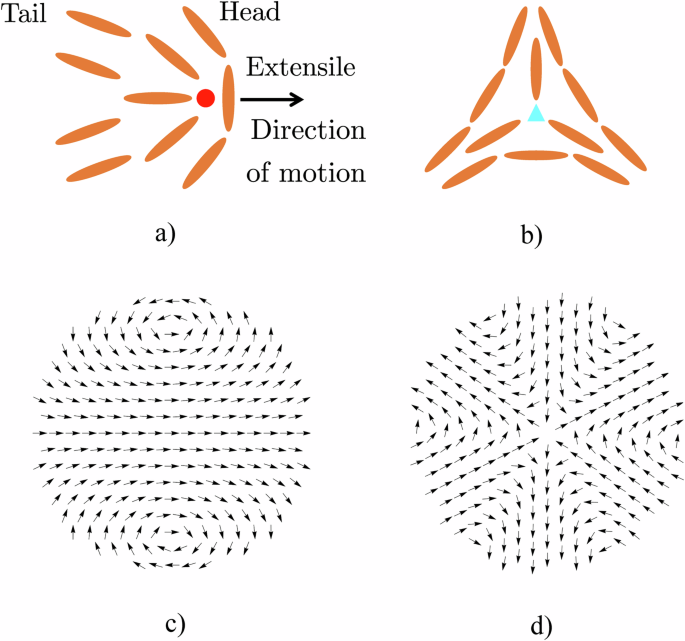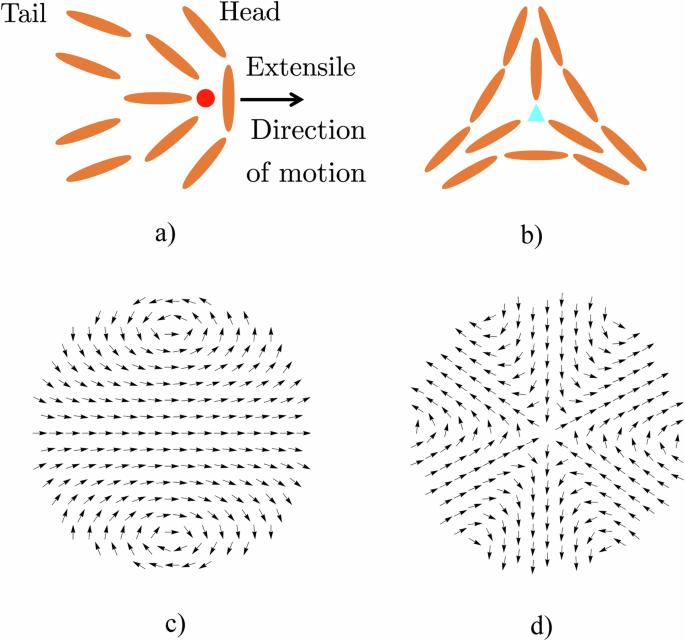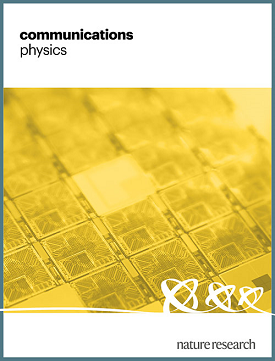Transport of topological defects in a biphasic mixture of active and passive nematic fluids
IF 5.4
1区 物理与天体物理
Q1 PHYSICS, MULTIDISCIPLINARY
引用次数: 0
Abstract
Collectively moving cellular systems often contain a proportion of dead cells or non-motile genotypes. When mixed, nematically aligning motile and non-motile agents are known to segregate spontaneously. However, the role that topological defects and active stresses play in shaping the distribution of the two phases remains unresolved. In this study, we investigate the behaviour of a two-dimensional binary mixture of active and passive nematic fluids to understand how topological defects are transported between the two phases and, ultimately, how this leads to the segregation of topological charges. When the activity of the motile phase is large, and the tension at the interface of motile and non-motile phases is weak, we find that the active phase tends to accumulate +1/2 defects and expel −1/2 defects so that the motile phase develops a net positive charge. Conversely, when the activity of the motile phase is comparatively small and interfacial tension is strong, the opposite occurs so that the active phase develops a net negative charge. We then use these simulations to develop a physical intuition of the underlying processes that drive the charge segregation. Lastly, we quantify the sensitivity of this process on the other model parameters, by exploring the effect that anchoring strength, orientational elasticity, friction, and volume fraction of the motile phase have on topological charge segregation. As +1/2 and −1/2 defects have very different effects on interface morphology and fluid transport, this study offers new insights into the spontaneous pattern formation that occurs when motile and non-motile cells interact. Collectively moving cellular systems often contain both motile and non-motile genotypes, and when mixed, these agents segregate spontaneously. The study reveals that the segregation of topological charges between these agents depends on activity and interfacial tension, with high activity and low tension favoring a positively charged motile phase.


拓扑缺陷在主动和被动向列流体双相混合物中的迁移
集体运动的细胞系统往往含有一定比例的死细胞或非运动基因型。众所周知,当线粒体混合时,运动和非运动因子会自发分离。然而,拓扑缺陷和活性应力在形成两相分布中所起的作用仍未得到解决。在本研究中,我们研究了活性和被动向列流体的二维二元混合物的行为,以了解拓扑缺陷如何在两相之间传输,以及最终如何导致拓扑电荷的分离。当运动相的活性较大,而运动相和非运动相界面的张力较弱时,我们发现活性相倾向于积聚+1/2缺陷并排出-1/2缺陷,从而使运动相产生净正电荷。相反,当运动相的活性相对较小,而界面张力较强时,则会出现相反的情况,从而使活动相产生净负电荷。然后,我们利用这些模拟对驱动电荷分离的基本过程形成物理直觉。最后,我们通过探索锚定强度、定向弹性、摩擦力和运动相的体积分数对拓扑电荷分离的影响,量化了这一过程对其他模型参数的敏感性。由于+1/2和-1/2缺陷对界面形态和流体传输的影响截然不同,这项研究为运动细胞和非运动细胞相互作用时的自发模式形成提供了新的见解。
本文章由计算机程序翻译,如有差异,请以英文原文为准。
求助全文
约1分钟内获得全文
求助全文
来源期刊

Communications Physics
Physics and Astronomy-General Physics and Astronomy
CiteScore
8.40
自引率
3.60%
发文量
276
审稿时长
13 weeks
期刊介绍:
Communications Physics is an open access journal from Nature Research publishing high-quality research, reviews and commentary in all areas of the physical sciences. Research papers published by the journal represent significant advances bringing new insight to a specialized area of research in physics. We also aim to provide a community forum for issues of importance to all physicists, regardless of sub-discipline.
The scope of the journal covers all areas of experimental, applied, fundamental, and interdisciplinary physical sciences. Primary research published in Communications Physics includes novel experimental results, new techniques or computational methods that may influence the work of others in the sub-discipline. We also consider submissions from adjacent research fields where the central advance of the study is of interest to physicists, for example material sciences, physical chemistry and technologies.
 求助内容:
求助内容: 应助结果提醒方式:
应助结果提醒方式:


